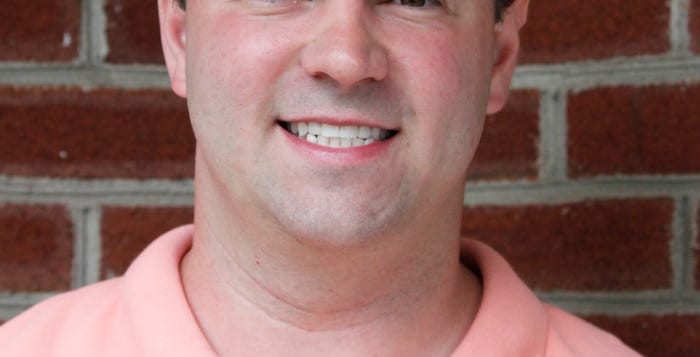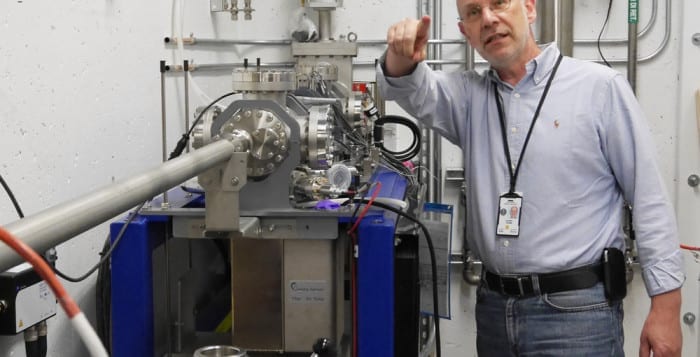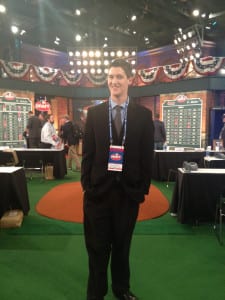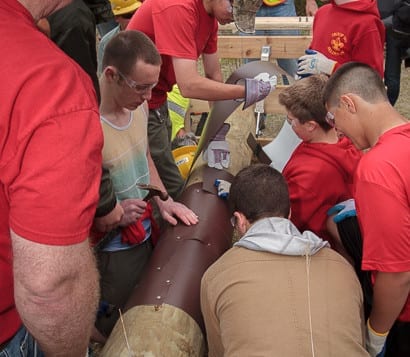
After years of working in the public sector and for local government, Republican Steve Tricarico, Brookhaven Town’s deputy highway superintendent, is making his first run for elected office.
The 30-year-old Wading River native will face off against incumbent Legislator Sarah Anker (D-Mount Sinai) for the 6th District seat in November. In a recent interview, Tricarico touted his years of experience working within local governments and his fiscally conservative approach when it comes to budgeting.
Bettering the county’s finances is a main focus of his campaign, Tricarico said. He was critical of the county increasing departmental fees, over relying on sales taxes and borrowing to pay for its operating expenses. He said the county, like its residents, should be living within its means and cut its borrowing.
“The county just doesn’t seem to be getting that message,” he said.
Tricarico said he took issue with how the county overestimated its sales tax revenue in 2014 by 1.5 percent, causing an $18.1 million shortfall, according to a June Fitch Ratings report. Despite the shortfall, the county budgeted for a 4.87 percent increase in sales tax for 2015.
Tricarico said this practice is “hurting our ability to function,” and if elected, he wouldn’t budget for any increase in sales tax, as to not overestimate.
Suffolk County Republican Committee Chairman John Jay LaValle described Tricarico as the “ideal candidate,” and one that people — from Dan Losquadro to former Suffolk County Executive Steve Levy — have sought out to work with.
“He has really excelled everywhere he has gone,” LaValle said.
Prior to working for the town, Tricarico worked as a district manager for LIPA, liaising between government officials and constituents. He also worked under Levy in the intergovernmental affairs unit. Tricarico said the jobs provided him with the best background as he understands local government, constituents and budgets.

Tricarico, who still lives in Wading River with his wife, Francine, said their two-year-old daughter, Charlotte, served as an inspiration for him to run as he wants to leave the county better than how he found it for her and for future generations.
As an adjunct professor at Farmingdale State College, Tricarico said he hears from students all of the time about how they would like to stay on Long Island, but just can’t because of the high-cost of living and lack of good jobs.
So if elected, he said he would like to explore ways to provide additional incentives to local businesses and create an economy that grows jobs. All options must be on the table when looking at how to better local government and its economy, Tricarico insisted, stating that he would explore the privatization of some government functions, like health and social services.
“As county representatives there is only so much we can do, but in order to start keeping good businesses here on the Island, we need to make sure that our county legislator, especially in the 6th District, is representing the constituents of the 6th District,” he said. “In my opinion, the current county legislator is rubber-stamping every policy that comes across her desk.”
In a phone interview, Anker said she is focusing on her responsibilities as a county legislator. She said she is grateful that she has had the opportunity to serve the people of the 6th District and would like to continue to do so.
Like Tricarico, Anker said she believes the county needs to start borrowing less. She described taking office in 2011 during one of the worst fiscal challenges anyone has faced — a time when the county didn’t have much of a choice but to borrow.
“I don’t think he understands the government process,” she said.
Anker also defended her position on creating task forces to look at problems. Tricarico described this as creating “bureaucracy to solve problems.”
But Anker said the groups focus government resources on an issue and create plans to fix things. For example, the SAVE Hotline, which provides schools a direct line to police in the case of an active shooter situation, came out of task force discussions.
“I don’t wait for something to happen,” Anker said. “I actively and proactively [look at] what needs to be focused on, what needs to be changed.”

















